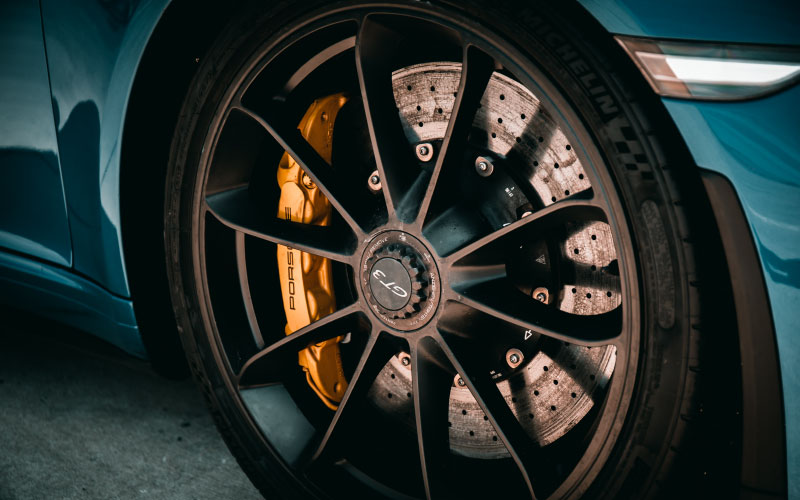- supercars.com.gh
- March 21, 2023
What Are the Main Differences Between Ceramic And Metallic Brakes?
The braking system is the most vital safety mechanism in the car. It provides the friction necessary to slow or stop a vehicle, but not all brakes are built equal. Here is a look at the difference between ceramic disc brakes and metallic brakes.
What is a Ceramic Disc Brake?
Ceramic disc brakes come from ceramic compounds similar to those found in pottery. However, these discs are more durable. They contain trace amounts of metals like copper but dissipate heat quickly. This enables ceramic discs to be the perfect option for racing and performance.
Metallic (or semi-metallic) brakes contain up to 70% steel, iron, and copper alloy melded together with graphite lubricant; this makes them excellent conductors of heat.
The friction of metallic pads over metallic rotors creates a noisier braking system. However, metallic brakes are cheaper and provide better cooling by drawing heat from the braking system.
Ceramic brake discs may be pricey, but they are quieter and produce less dust on the wheels as they wear over a longer time.
They resist salt and rust. These brake discs are poor conductors of heat but provide powerful braking..

Determining which one is the better brake disc will depend on the type of vehicle and its use.
Ceramic brake discs last longer and offer a quieter braking system. They have a shorter braking distance and give you better control of your car.
Being poor conductors of heat, ceramics don’t draw heat from the braking system. This higher temperature can lead to more wear and tear.
Ceramic discs are also poor performers in colder climates. Due to their material makeup, however, ceramic brake discs are rust-resistant.
If you tow heavy weights or want an affordable brake pad for everyday use, metallic brakes are the better option. They have high conductivity and draw heat from the braking system to cool your vehicle.
However, metallic discs are noisier and wear faster. They also leave behind more brake dust on the wheels. Nonetheless, metallic brake pads have a higher thermal threshold than steel brake pads, making them perfect for extreme weather conditions.
Metallic brakes have low compressibility and give the brake pedal a firmer feel.
While ceramics last longer and are perfect for the race track, metallic brakes are better for heavy haulers in cold weather.
Ceramic brake discs are lighter than metallic brakes. This lightweight feature makes them ideal for the smaller, more compact performance cars that rely on aerodynamics to fly on the track.
The durability of ceramic discs makes them perfect for intense performance on the track.
They are less susceptible to the 1000°C temperature that a fast-moving vehicle produces. Thus, ceramic disc brakes don’t suffer brake fades under high temperatures. Steel or metallic discs are better for everyday use but ceramic pads are better for performance.
Many garages offer brake upgrades and repairs in Ghana. They include the following:
Recent Post
Have Any Question?
If you have a question, call or email us.
We will get back to you as soon as possible!










